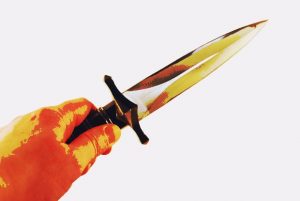It was the late Hans Conried who provided the voice of Snidely Whiplash, the main antagonist of the cartoon, Dudley Do-Right of the Mounties.
As a stereotypical villain, much like those portrayed in today’s novels, he wore a tall black top hat and cape and had a long nose and a mustache.
Okay, present day authors may not dress their villains in such attire but the premise is the same … they’re evil, often dark, and they’ll stop at nothing to achieve their goals, even if murder is the only thing standing between them and getting what they want, and, of course, their freedom after the deed is done.
Therefore, it’s up to the hero of the story to save the day.
In Whiplash’s time it was Dudley Do-Right who rescued Nell from oncoming trains and other hazards. Nowadays there’s Reacher, D.D. Warren, Joanna Brady, Ellie Hatcher, Harry Bosch, Lincoln Rhyme, Sam Kovac and Nikki Liska, Dave Robicheaux, Eve Dallas, and, well, the list goes on and on. But in the end, the hero always wins, leaving the villains and/or antagonists to say, as did Whiplash, “Curses, foiled again!”
I imagine that’s what went through the mind of Peggy Jo Tallas, an ex-convict, just prior to being shot and killed by four Tyler, Texas police officers after she pointed a handgun at them. The shooting occurred after Peggy Jo made her escape after robbing the Guaranty Bank shortly after 11 a.m. that morning. Police later identified Tallas’ weapon as a toy gun.
“Cowboy Bob”
In the early 90’s, a polite and quiet man with a pot-belly and graying hair, who wore sunglasses to hide his eyes and a ten-gallon hat perched backward on his head, robbed several area banks. The suspect never looked at the security cameras and was careful about checking for dye packs (more on dye packs in a moment).
Nothing the robber did stood out to investigators. No odd manners of speech (he didn’t say a word, making the demands by way of written notes). No fast get-a-aways (no tire tracks or identifying marks on the pavement). Always had stolen plates on the get-a-way car making it difficult to track.
However, when Cowboy Bob robbed the First Interstate Bank in Mesquite, Texas, he’d left on the actual license plates assigned to his Grand Prix. When police tracked down the vehicle belonging to a man named Pete Tallas, a Ford factory worker, Pete told investigators that he’d given the car to his sister, Peggy Jo. So off they go to pay a visit to Peggy Jo Tallas, expecting to find the mysterious pot-bellied, sunglass- and ten-gallon-hat-wearing man with graying hair hiding out in the apartment. Instead, they found Peggy Jo and her mother.
During a look around the apartment, the officers located a mannequin head with a fake beard, and a big ol’ bag of cash. The items had been stashed away in a bedroom closet. They pressed Peggy Jo about the possibility of a boyfriend and his location. She denied knowing either. It was at this point when one of the detectives noticed a bit of dried glue hanging from her lip AND, flecks of gray dye in her hair.
Cowboy Bob was actually Cowgirl Peggy, obviously, and for her crimes she served a whopping three years in prison. When she got out she bought an RV snd robbed another bank. This time, though, and perhaps she wanted to be caught, she wore sunglasses and a big floppy hat—no male disguise—, she spoke to the teller instead of passing a handwritten note, and she didn’t bother to check for dye packs.
Peggy Jo walked across the street to her RV. On the way, a dye pack exploded. She climbed into her RV and drove away. Police were notified and were provided a description of the RV. It was only a matter of minutes before a pursuit began and ended shortly after it started. Peggy Jo emerged from the camper with gun in hand, pointed at the officers and she dared them to shoot her. They granted her request by responding with four rounds fired from the sidearms.
Peggy Jo “Cowboy Bob” was dead.
“Curses, foiled again” ~ Snidely Whiplash, stereotypical villain whose hobbies were tying women to railroad tracks and bank robbery.
Dye Packs
Dye packs help officers locate both the robber and the stolen loot.
The packs look like real money, but they’re designed to stain stolen currency by exploding a colored substance, typically red dye 1-methylaminoanthraquinone (MAAQ), that covers the cash and often the robber as well. Depending upon the timing of pack’s explosion, it’s possible that it occurs inside the suspect’s vehicle, which stains the seats and other portions of the interior. It’s messy.
Tear gas is included in some dye packs, making the device doubly effective. Now you have a grown red guy who’s bawling like a baby.
Should the crook successfully make his escape, the dye does not easily come out during even several washings. The same is true when contacted with skin. The stuff is extremely difficult to remove, especially in places such as nail beds and ridge areas of fingerprints.
If a suspect is located, an examination of clothing found would be conducted in a laboratory. The testing is as follows.
Fabrics are examined visually and/or microscopically.
If the telltale red or pink staining is observed, dichloromethane is used extract it from the material.
Red dye 1-methylaminoanthraquinone is soluble in Dichloromethane.
If the tested material is indeed soluble in dichloromethane, it’s then examined by Gas Chromatography-Mass Spectrometry and/or Fourier Transform Infrared Spectroscopy.
A positive result indicates the material was exposed to the red coloring in the bank’s dye pack.
Bingo! You have your bank robber.
Apply cuffs and take the crook directly to jail.
How a Dye Pack Works
A dye pack consists of a hollowed-out stack of real bills. Inside the stack are the red dye, tear gas, and and electronics used to activate the explosion.
The dye pack remains in “safe mode” resting on a magnetic plate inside the teller’s cash drawer.
When a robber approaches and demands money, the teller simply slips the dye pack in with the rest of the cash.
When the pack is lifted from the magnetic plate, the pack is “armed,” or activated. It’s then ready to do it’s job.
Somewhere near the exit doors are activation points and, as the robber and his sack of money pass by on his way outside, a timer inside dye pack’s explosive device is automatically activated. It’s set to allow the robber to get a bit of distance away from the bank before going Kaplooey!
I’ve seen this first hand and the results are impressive. The packs basically render the stolen cash useless since it’s all stained a bright reddish-pink color, as is the robber.
You’ve most likely read about the shootout I was in with the bankroller, right? Well, the cash he stole was indeed red when we recovered it. He, too, had reddish stain on his face, hands, arms, legs (he wore shorts) and his tennis shoes. The pistol he used to fire at me also had bits of dye on the grips, a transfer from the palms of his hands.

Bank robber after an intense shootout. 68 rounds were were fired during the incident. I fired 5, with all 5 hitting the intended target, once in the head and four in the chest. Yet, he still got up and ran. A sheriff’s captain and I tackled him to apply handcuffs. He died on the way to the hospital. The staining on his legs is the red coloring from the exploding dye pack.


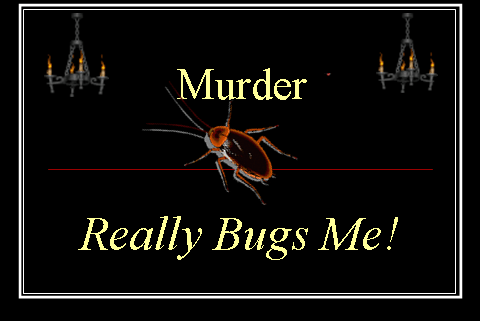


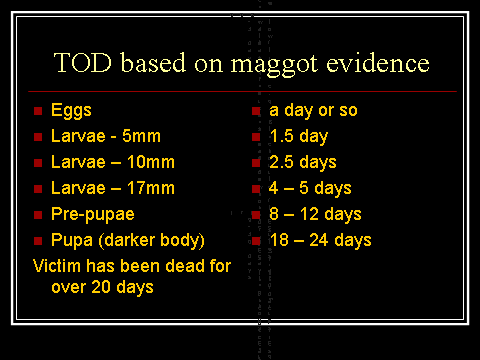




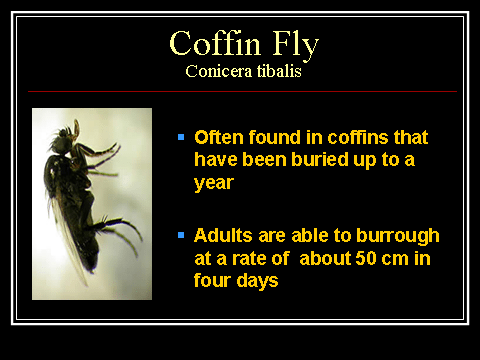

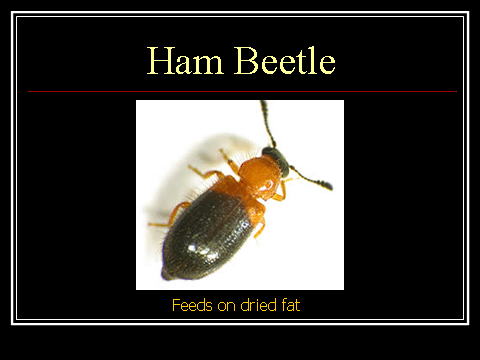
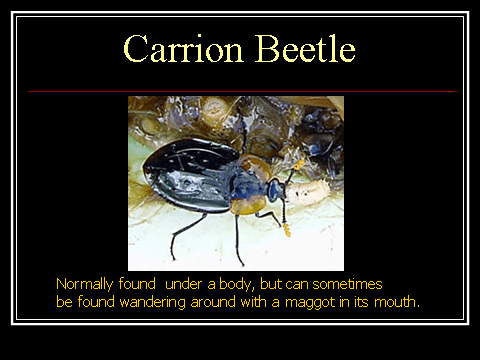




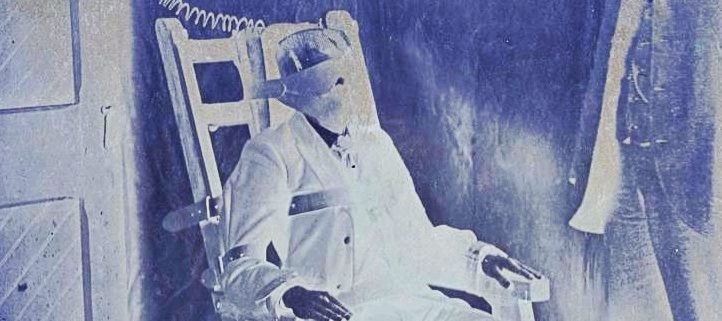

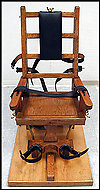






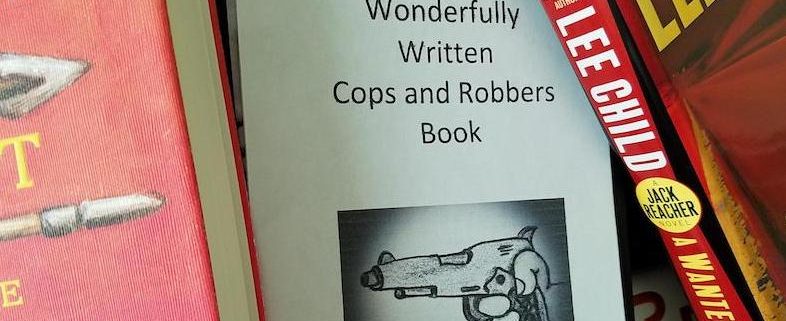
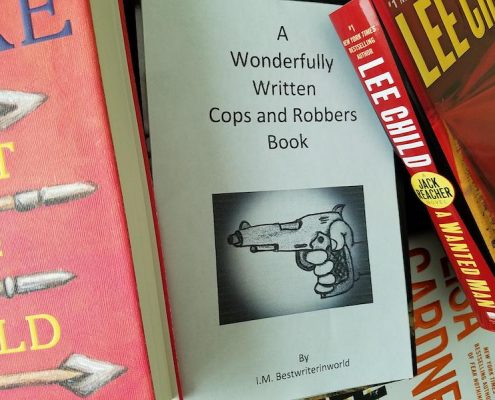

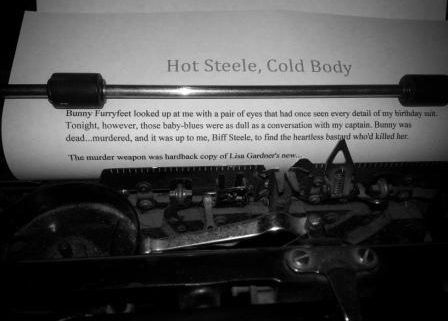
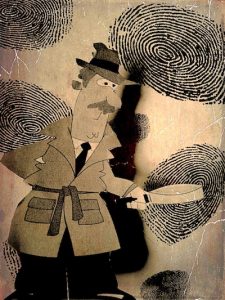 My writer understands the huge differences between the written word and the on-screen action seen on TV and film. Live-action stuff quite often needs over the top excitement to capture and hold the attention of a viewing audience. TV watchers see events unfold in vivid color. They hear the excitement pumping throughout their living rooms via high-dollar surround sound systems.
My writer understands the huge differences between the written word and the on-screen action seen on TV and film. Live-action stuff quite often needs over the top excitement to capture and hold the attention of a viewing audience. TV watchers see events unfold in vivid color. They hear the excitement pumping throughout their living rooms via high-dollar surround sound systems.

